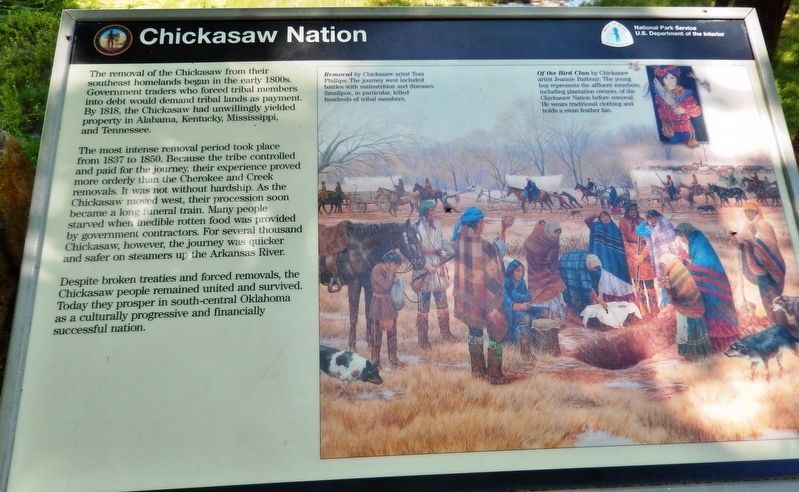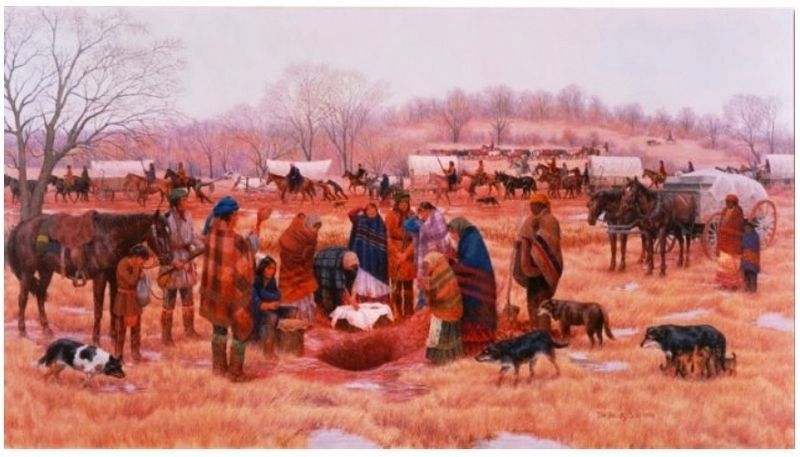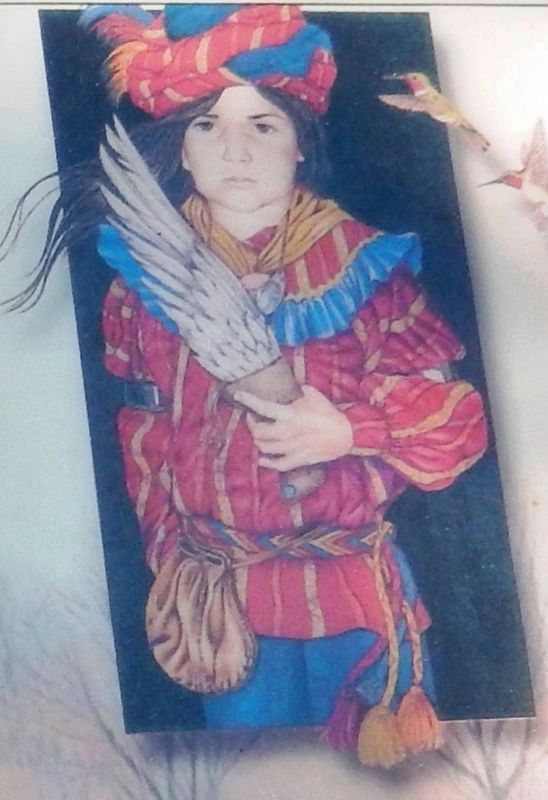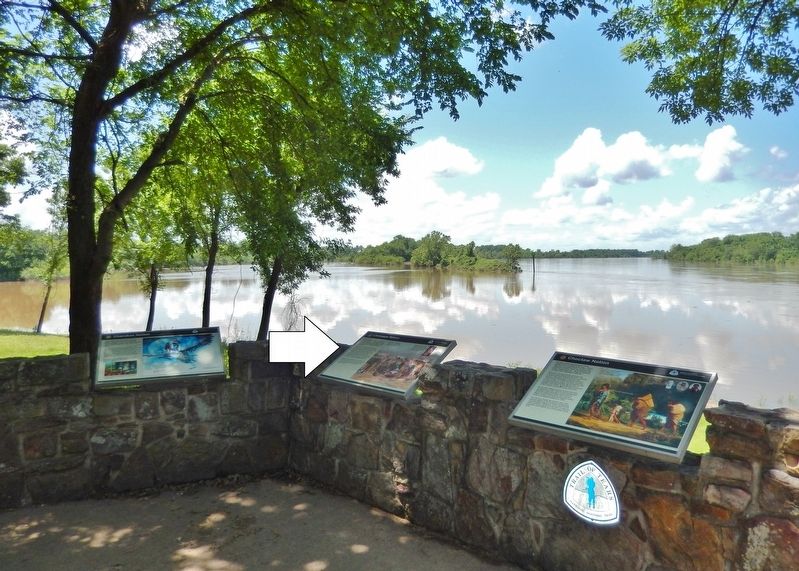Fort Smith in Sebastian County, Arkansas — The American South (West South Central)
Chickasaw Nation
The most intense removal period took place from 1837 to 1850. Because the tribe controlled and paid for the journey, their experience proved more orderly than the Cherokee and Creek removals. It was not without hardship. As the Chickasaw moved west, their procession soon became a long funeral train. Many people starved when inedible rotten food was provided by government contractors. For several thousand Chickasaw however, the journey was quicker and safer on steamers up the Arkansas River.
Despite broken treaties and forced removals, the Chickasaw people remained united and survived. Today they prosper in south-central Oklahoma as a culturally progressive and financially successful nation.
Erected by National Park Service, U.S. Department of the Interior.
Topics and series. This historical marker is listed in this topic list: Native Americans. In addition, it is included in the Trail of Tears series list.
Location. 35° 23.264′ N, 94° 26.001′ W. Marker is in Fort Smith, Arkansas, in Sebastian County. Marker can be reached from the intersection of Parker Avenue and South 3rd Street. Marker is located on the Fort Smith National Historic Site grounds, near Belle Point on the west side of the fort, overlooking the Arkansas River. Touch for map. Marker is at or near this postal address: 301 Parker Avenue, Fort Smith AR 72901, United States of America. Touch for directions.
Other nearby markers. At least 8 other markers are within walking distance of this marker. Choctaw Nation (here, next to this marker); Muscogee (Creek) Nation (here, next to this marker); Cherokee Nation (here, next to this marker); Seminole Nation (a few steps from this marker); Request Denied (within shouting distance of this marker); Osage Nation (about 300 feet away, measured in a direct line); Abandoned and Forgotten (about 300 feet away); Establishing Fort Smith (about 300 feet away). Touch for a list and map of all markers in Fort Smith.
More about this marker. A Trail of Tears National Historic Trail interpretive site.
Also see . . .
1. Exiled to Indian Country: Chickasaw Nation. After President Andrew Jackson convinced Congress to pass the Indian Removal Act in 1830, Chickasaw leaders made multiple trips to Indian Territory, present-day Oklahoma, to find suitable land. The tribal leaders found none to their liking, and the
tribe resisted removal until 1837, when invading settlers and threats of war from Jackson finally forced them out. (Submitted on October 1, 2020, by Cosmos Mariner of Cape Canaveral, Florida.)
2. Chickasaw Nation History. The Chickasaw people moved to Indian Territory during the "Great Removal," on what was called the "Trail of Tears." Other tribes forced to relocate were the Cherokee, Choctaw, Creek and Seminole, called the "Five Civilized Tribes" because of their highly developed ruling systems. The Chickasaws were one of the last to move. In 1837, the Treaty of Doaksville called for the resettlement of the Chickasaws among the Choctaw tribe in Indian Territory. (Submitted on October 1, 2020, by Cosmos Mariner of Cape Canaveral, Florida.)
Credits. This page was last revised on October 1, 2020. It was originally submitted on September 28, 2020, by Cosmos Mariner of Cape Canaveral, Florida. This page has been viewed 219 times since then and 27 times this year. Photos: 1, 2, 3, 4. submitted on October 1, 2020, by Cosmos Mariner of Cape Canaveral, Florida.



